Standup Paddleboarding can seem daunting for a lot of people, let alone participating in a yoga session on a paddleboard. It’s not to be feared though, and SUP yoga for beginners is attainable and will leave you feeling accomplished, no matter your balance, just for having practiced.
I am Heather Berg, a yoga instructor and avid standup paddler. I lead SUP Yoga for beginners and intermediate participants in Deerfied Beach, Florida. It’s important to understand what to expect for doing your first SUP yoga class, so take a moment, breathe, relax, and ready yourself to try SUP yoga.
See what events and SUP Yoga sessions are available through Soul Garden Yoga.
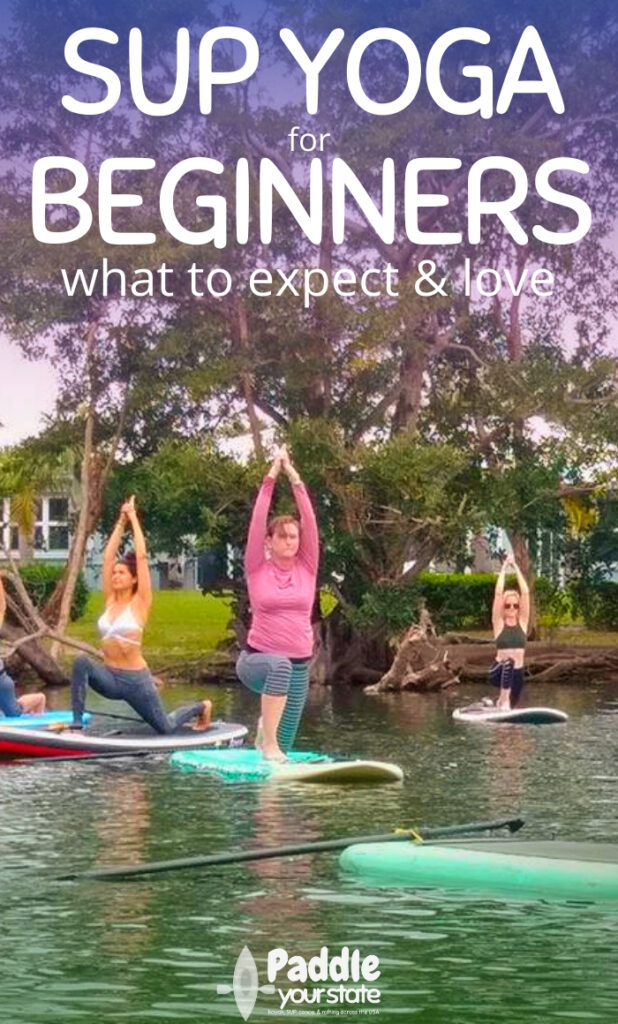
The SUP Yoga Experience
A symphony of cicadas and birds in the mangrove trees serenade me as I glide my paddle alongside the board. The sun’s reflection sprinkles like glitter across the water. Feet grounded, hip distance apart, soft gaze ahead. Each stroke mirrors my breath.
Inhale, lift paddle and dip into the water; exhale, drag the paddle alongside the board, carving the water. Time slows to a pace that fits my soul like a glove.
Like a walking meditation, Stand Up Paddleboarding can bring you into the present moment: developing calm, connectedness, and embodied awareness. Each time I get on the board, it is a reminder of this beautiful union: breath, body, mind and nature.
SUP Yoga for Beginners: my first practice
Combining this glorious paddling practice with Yoga is a perfect fit. The first Stand Up Paddleboard (SUP) Yoga class I took was in 2007 in Tequesta, Florida, a sleepy beach town north of West Palm Beach.
I was visiting a friend and we decided to give it a try. We both loved paddling and Yoga and thought, why not? This was well before the popularity of some of the trendy hybrids like goat yoga or yoga with beer. It was even way before SUP Yoga was used as a floating platform for those coveted Instagram pics.
I recall launching the large, wide board into the Intracoastal, surrounded by beautiful mangrove trees. I fell in love immediately.
“JUMP IN!” the teacher told us. “Get it out of the way so you won’t worry about falling in for the rest of the class.” In that moment, layers of anxiety were washed away. Now, I asked myself what’s the worst that can happen, I fall in?
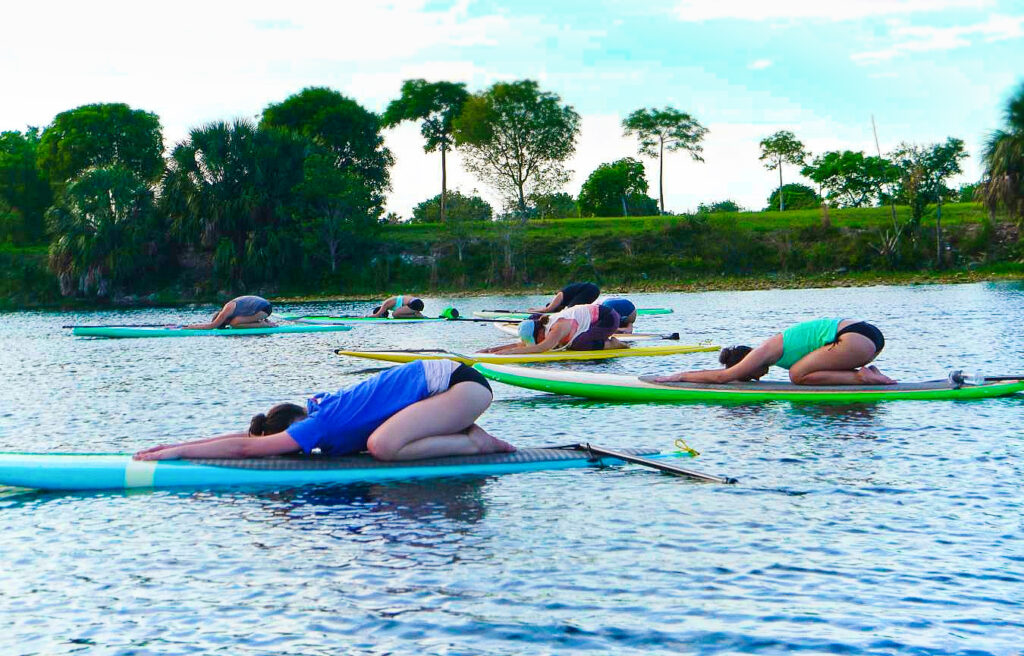
Progression of a SUP Yoga Experience
We began the class immediately by opening our shoulders, lifting the paddle horizontally up and over our heads….
Inhale: extend, lengthen and ground, exhale, lean left.
Inhale, extend, lengthen and ground, exhale, lean right.
Immediately I could feel the impact of creating equal foundation with the feet on a wobbly board.
We floated to a secluded alcove, got down into tabletop and practiced different poses: cat/cow, bird dog, child’s pose, down-dog. The poses were fascinating on the unstable foundation. The board definitely doesn’t lie. There is instant feedback to reveal where your imbalances reside. All the important aspects of the physical part of Yoga, foundation, breath, bhandhas (energy locks), focal point made so much sense here on the board. As I lay in shavasana, corpse pose, all I kept thinking was how incredible this combination is, SUP and Yoga.
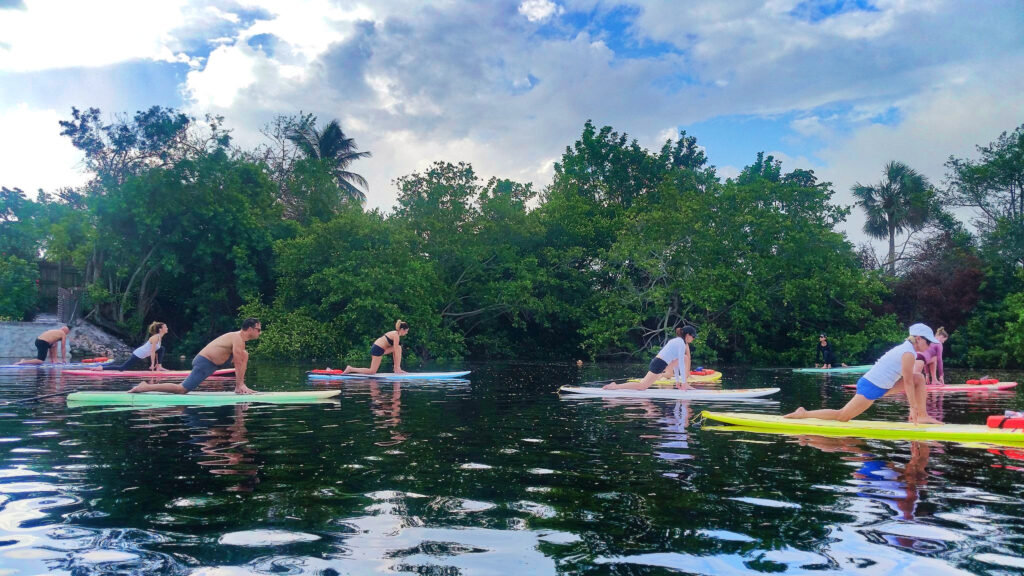
Building My Own SUP Yoga Practice
The experience of moving with my breath on the water left an impression. I searched for SUP Yoga in my area. Every place offering it was a good 30-40 minutes away. I love being outdoors on the water, so I made the trek, taking different SUP Yoga classes over the years until I connected with a young woman with a mobile SUP business. She was looking for an experienced Yoga teacher who was willing to teach Yoga Basics on the board. I was IN!
We went out together many times, she teaching me the foundations of SUP technique and water safety while I taught her private SUP Yoga. Like my on-ground practice, the importance of standing on my head pales in comparison to turning inward and slowing down on the board. Using the foundational concepts of bringing more awareness to grounding, breath, engaging energy locks, and focal point, I began teaching SUP Yoga in 2013 in Deerfield Beach, Florida and haven’t looked back since.
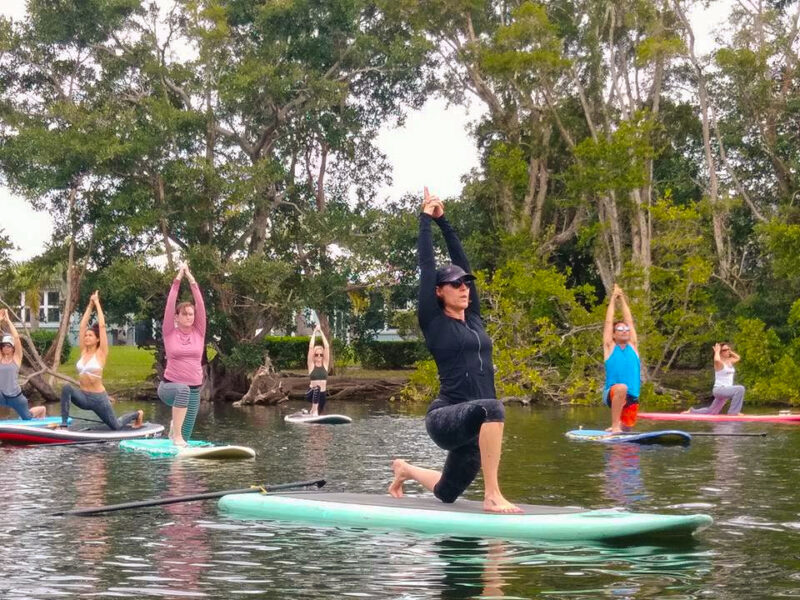
SUP Yoga for Beginners FAQ
New to SUP Yoga? Don’t worry. SUP Yoga for beginners is all about understanding, and like any Yoga session, is about practice. Here is some info and questions I often get asked:
How often do people fall in the water?
This is the BIG question! You need to come assuming you will get wet. Although we have life jackets on the board, it is recommended that you are a proficient swimmer. Some classes no one falls in and other times people topple over left and right! And yes, I fall in too! If I sense there is fear of falling looming in the air, I highly recommend for everyone to “Jump in and get it over with!”
I personally enjoy teaching classes that are on calm water. I teach mainly in the Intracoastal in South Florida but have taught in lakes in Florida and the Poconos. You will find that classes can be held in the ocean/gulf, lakes, marinas, and even springs in central Florida. Keep in mind, you are out in nature so coming across some wild life is a possibility. I have seen manatee, fish and sting ray over the years.
Where do I put my belongings?
Some places may have lockers to hold your dry clothes and towels. If not, stashing stuff in your car and having a waterproof case for your phone and keys is a good idea. I usually tie it under the bungee for safe keeping.
How early do I need to arrive?
Give yourself ample time to park, use the restroom, sign waivers, etc. Be sure to be well hydrated and apply sun protection beforehand.
If I have my own board can I use it?
It’s nice when the SUPs used are specifically for SUP Yoga. They usually are a bit longer (11 feet, compared to 10ft), slightly wider and have rubber padding that is almost the length of the board. Some may even have a bungee or special place to hold your water bottle. If you feel comfortable enough on your SUP, then by all means, bring your own. There usually are two prices; one for renting a board and one for bringing your own.
What if I have never SUP’d or practiced Yoga before? What can I expect from a typical SUP Yoga class?
I give a short lesson to those who have never been on a SUP. The learning curve on how to paddle is pretty small and although you might feel a little uneasy at first, it only takes a short time on the water to get the hang of it! Some people choose to stay seated or kneel and never stand. I have had numerous people join who have NEVER practiced Yoga but have SUP’d and even had some whom have never done either. Having some knowledge of Yoga can only help your experience, but definitely is not necessary.
Once everyone is on the board, anchor attached, we paddle out as a group to a secluded alcove-like area. This can take anywhere from 10-20 minutes depending on wind and water current. We toss our anchors overboard and I lead a 50-60 minute all-levels Yoga class. We start out with poses that are more grounding so you can get used to the feeling of doing poses on top of the water. You can push yourself as hard as you want or back off and relax on the board. It isn’t a competition. After the much coveted shavasana, we paddle back. The entire experience usually takes 1 hour and 45 minutes.
What do I wear for SUP Yoga?
Wear whatever you feel comfortable in and that allows a good range of motion. Bathing suit, shorts over bathing suit, swim shirt, boardshorts. I like to wear a UPF hat that fits snuggly. Polarized sunglasses are also a good idea as they help with the glare of the sun. Be sure the hat and sunglasses fit snugly and stay on well in a Down-dog pose.
Does SUP Yoga help your regular Yoga practice?
One of the best parts about SUP Yoga is that it will enhance your practice on the mat. Finding a way to awaken your Yoga practice can tempt any avid yogi. The benefits for those who are more interested in a physical workout, you will use and engage muscles you didn’t know you had! Being on a firm, stable board on the water forces you to bring razor sharp awareness to each pose and transition. SUP Yoga is a full body workout with an emphasis on your core.
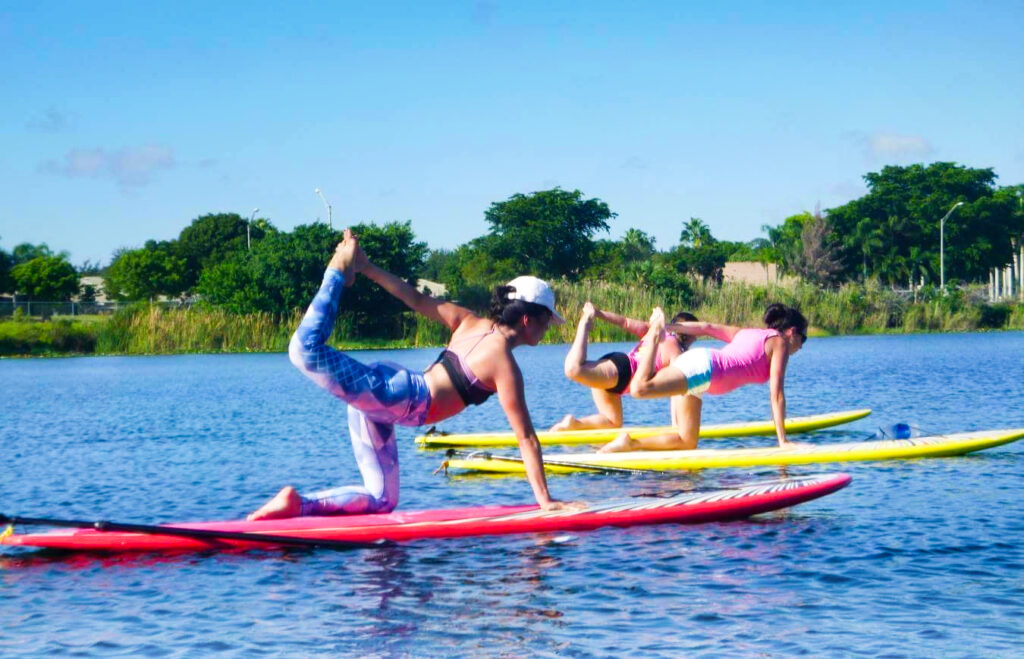
I always tell my floating yogis that the board doesn’t lie: it will tell you immediately where your foundation or balance is off. Doing SUP Yoga is a great way to be curious; you learn and feel how you compensate for different areas of the body. And who can resist shavasana on the board?
For those looking for more of a mind/body/spirit practice, SUP Yoga is a great way to combine the elements of nature with the mind-body connection that Yoga delivers. Flowing on an unstable foundation requires more awareness on all the important aspects of Yoga: foundation, breath, energy locks and focal point.
When we bring mindfulness to all of these simultaneously, that is where the magic happens. Personally, I have developed a deeper connection to the depth of my personal Yoga practice and have a new appreciation for the breathtaking nature present where I live.




I have been wanting to try this for YEARS! What a great introduction to the sport. Now I need to find a local (Seattle) place to try this since it’s summer time.
Overcoming the fear of falling into the water I think is key. 🙂